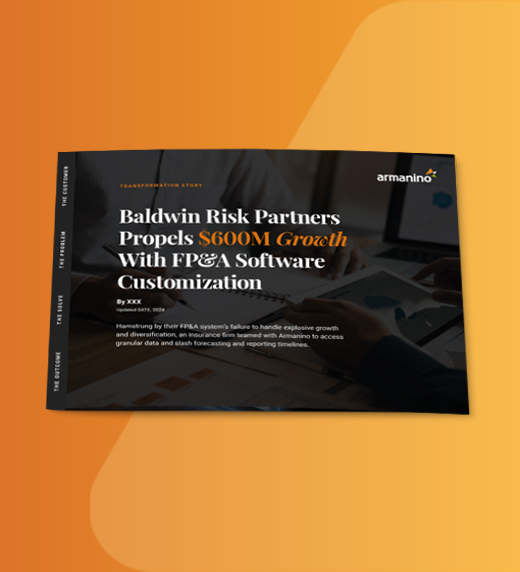
Updated June 26, 2023
Board of directors meetings are one of a CEO's critical responsibilities, and well-run board meetings are the hallmark of highly functioning business leaders. They allow better analysis and discussion that naturally leads to more effective action and more desirable outcomes. Running inclusive, transparent, smooth and informative board meetings enable your company to make better decisions, build more value and reach higher goals.
Board meetings are driven by the CEO, with a major assist from the CFO and finance organization. To lay the groundwork for a productive meeting, CEOs and their teams need to compile a package of board materials that’s informative, insightful and provides directors the necessary level of financial detail and analysis.
All too many board meetings are cobbled together too late, without a clear agenda and with insufficient information provided to the board prior to the meeting itself. Such meetings are not only frustrating for the board; they can be career limiting for the CEO and CFO, who are supposed to be focused on making that time productive. Good boards know when they are part of a hastily prepared, badly run board meeting.
One critical thing to understand is that board meetings are about education and decision-making. Boards typically drive toward consensus, and they need data and analysis to make good decisions. That is the job of the CEO and CFO — ensure no surprises and provide great information to facilitate clean decisions.
Overall, the board materials should outline and explain significant variances from plan (both positive and negative), illustrate management’s execution against plan and show the management team's ability to understand and clearly explain the factors impacting execution.
The package maps the flow of the board meeting, which typically follows some variation of this general schedule:
An effective board package combines financial statements with other information and commentary to provide a complete picture of the company's operations. By helping your board understand these documents and how they relate to one another, you enable them to develop an informed view of your company’s financial condition and stability. Include these core financial statements:
Income statement (aka profit & loss statement or statement of operations) — This is a “flow” statement, meaning it covers a period of time. For this period, it presents total company revenue, deducts all costs and expenses, and derives the resulting income or loss generated by the business.
Balance sheet — This is a “stock” statement, representing a point in time — the end date of the income statement period. It presents the company’s assets and liabilities, and derives the net worth or “equity” of the business by subtracting liabilities from assets.
Statement of cash flows (aka statement of changes in financial position) — Also a “flow” document, it covers the same time period as the income statement. It combines information from the income statement and balance sheet to illustrate how much cash the business either generated or consumed during the period.
Use appropriate detail from the financial statements to clearly show material variances from plan, both positive and negative. It’s important to anticipate the board’s reaction to these variances and be prepared to give detailed answers to questions about them. CEOs should also demonstrate an aggressive approach to addressing shortfalls, and the review of operating expenses should show ongoing attention to cost control.
Include the operating metrics/key performance indicators (KPIs) that really matter to your business, such as recognized revenue, cash balance and churn. But don’t just report the numbers. You also need to provide an interpretation and analysis of what the metrics mean for the business. For example, along with reporting on the company’s cash balance and its change since the last meeting, you need to provide an analysis of the factors impacting cash flow positively or negatively.
It’s important to distribute the package well in advance of the board meeting to give the directors adequate time to review the information. If the meeting itself is their first time seeing the content, they will spend too much time absorbing and understanding, and not enough time questioning, discussing and getting to action. Send it out three to four days beforehand, at minimum. The CEO should also be available during this time to discuss the package and answer questions. This allows the board to study the materials and come prepared for value-added discussion.
Have a consistent message throughout the materials. And present the information in a format that’s consistent from meeting to meeting, with consistent reporting, so the board knows what to expect. This also makes it easier to prepare, because you can create an outline of the board deck and update it for each meeting instead of starting from scratch.
Your directors are all busy people, so make sure the materials are clear and concise. Guide the board by distilling the key aspects of your business. Board packages tend to get longer as companies grow and there is more ground to cover. Even so, you generally should not need to distribute more than five to ten pages of written material in addition to the financial statements, absent a special circumstance.
For instance, if you are going to present a proposed acquisition to the board, that would require disclosing substantially more information, perhaps in a separate package. It’s all a matter of judgement, past practice and what your directors have come to expect in terms of information load.
A good board package enables you to set clear expectations and communicate your company’s performance with complete transparency. This will help ensure that your meeting runs smoothly, with no unpleasant surprises on either side, and is as productive as possible.
This practical checklist can help ensure productive board meetings for all involved.
Trust is the first and most important of the various factors that can diminish an effective working relationship between an organization’s management and its board members.
While the board and management share oversight over the business operations, culture and performance, potential deficiencies in any of those areas can usually be traced to ineffective communication and, ultimately, a lack of trust.
Trust is a fundamental building block that underlies everything board members do as they interact with management and each other. For instance, trust is essential for effective strategy discussions and reviews of the organization’s performance. Board members and management also need to have candid communications at a frequent, agreed-upon cadence to maintain alignment with the organization’s strategy and operating results.
Building and maintaining trust is so important, in fact, that if board members and company management don’t trust each other, the organization likely won’t succeed.
One of the most common issues hindering effective board and management cooperation is a personality conflict between two or more people in the meeting room. This type of disagreement can influence board members’ or management’s perception of an issue, and can preclude effective conversation and collaboration to address emerging problems. Even two members who tend to disagree can affect the performance of the board as a whole.
Personality conflicts are particularly insidious because most people in the meeting room are aware of the issue but are reluctant to bring it up for discussion. As a result, potential issues fester longer than they should, and the board avoids sensitive but important conversations.
Instead, it’s more effective to acknowledge the issue, and to help the board members understand the importance of setting personal differences aside to focus on the organization’s strategy, goals and culture. Board members can (and sometimes should) disagree, but they need to avoid taking those disagreements personally or attacking each other.
Another common issue with many boards is members focusing exclusively on their individual areas of expertise. This can result in a siloed view of the organization’s priorities and performance and can influence competition for organizational resources negatively.
Board members should understand what’s happening in every function, using an agreed-upon set of metrics. For example, while the executives and board members who focus on HR will monitor the organization’s retention rate, the whole board should be aware of that metric and how it is trending because a negative shift in retention could indicate other emerging problems.
Once the board and management are comfortable that trust has been established, they can turn their attention to discussing the organization’s purpose, vision and operating goals. These need to be aligned and monitored, which in turn requires trust-based candid discussions. Too many organizations jump directly to working on the company’s strategy without ensuring effective trust among the board and management.
As a growing company recognizes the need to form a board, an important early step in the process is taking time for the new board members to get together and align how they plan to operate and communicate.
Through candid conversations and exercises, the board members can establish ground rules such as how often they’ll communicate with management and meet in person. As they get to know each other, they can also discuss their interests and strengths so they are able to build relationships.
After learning about each other, the next step in creating an effective board is agreeing on the organization’s strategic goals, as well as the metrics they will use to monitor performance. This will be a blend of short-term and long-term goals that reflect the organization’s strategy and purpose. While some metrics such as revenue and profit will be obvious, there can be a variety of non-GAAP metrics that provide insight into the company’s performance.
Board members also have to understand they are, in effect, change agents because every strategic decision results in some form of change. In addition to setting strategy and identifying goals, the board has to establish plans for the company to achieve those goals, as well as to communicate the change in the expected results to employees, investors and other stakeholders. This kind of transparency is critical not only in promoting the success of the change, but also in maintaining transparency and supporting the organization’s culture.
And board members need to be aware that this is an ongoing effort that will require continuous monitoring, and potential adjustments as needed over time. As the board reviews performance, for example, it is equally important to acknowledge wins and to address shortcomings.
The type of in-depth review that happens when a board is created should also take place when the organization experiences a significant event, such as a funding round or a merger that will result in a change to the board’s composition. Adding one or two members to a board, for instance, changes the group’s operating dynamic and its essential to discuss the change as it is taking place.
Similarly, a public offering will introduce new legal responsibilities for board members. Some roles will be mandated, and the board will face additional scrutiny as the company reports its quarterly and annual results.
Unlike those of private companies, nonprofit boards are not always built around a sophisticated understanding of business and finance. Members of nonprofit boards of directors likely joined because they had a passion for the organization’s mission and that contribution is one that is essential to every nonprofit.
But even if board members are enthusiastic, wise or skillful, they may not fully understand that all board members, regardless of the skills they bring to the table, have a fiduciary responsibility to be good stewards of the public’s money. And nonprofit accounting is quite unique — so much so that oftentimes board members with a strong understanding of for-profit accounting often are quite perplexed the first time they encounter nonprofit financial statements.
With these challenges, how can a nonprofit board assure fiscal responsibility? Strong board operating procedures, the right committee structures and appropriate training provide the platform for effective fiscal oversight and sound decision making.
One governance best practice is to make sure that at least one board member is a CPA or experienced equivalent — to provide insight into the nonprofit’s finances and explain financial matters to board members who are less financially savvy. Typically designated the board treasurer, this person facilitates transparency of the organization’s financial health to the full board and the public.
A good treasurer will be able to convey complicated nonprofit concepts into an understandable manner and will have the willingness to answer all questions from fellow board members, no matter how basic they may be.
However, it is not the treasurer’s duty to maintain the nonprofit’s books and records — the chief financial officer (CFO), controller or bookkeeper generally handles that responsibility. The treasurer typically interfaces with the CFO monthly, bimonthly or quarterly, depending on the frequency of board meetings, and reviews the financial information for accuracy and reasonableness.
The treasurer also compares actual and budgeted numbers and the relation to prior year results. They also identify any unusual activity, such as a drastic decrease in cash contributions or significant expense variances and help determine whether appropriate responses have been taken. This information is then presented to the full board.
Most nonprofit boards are supported by committees, particularly on the financial front. The finance committee, which is usually chaired by the board treasurer, is comprised of financially savvy individuals, not all of whom have to be board members. Typical oversight duties are to:
If the nonprofit operates without a compensation committee, it is usually left to the finance committee to review and recommend the salary of its CFO and executive director. This usually entails looking at salary surveys and comparable businesses to see if the recommended compensation is reasonable.
If the organization has an annual audit, a best practice is to have an audit committee composed of individuals who have financial experience and are independent from the board and staff. In California, it is a requirement for most organizations with revenues exceeding $2 million.
The audit committee’s main responsibility is the oversight of the annual audit process, including interviewing audit firms, obtaining fee quotes and recommending the appointment of an independent auditor. The auditor selection process should be conducted without influence from management to avoid conflict of interest. The key aspect of this committee is that it is they, and not the CFO, to whom auditors report.
The audit committee will meet with the audit firm and discuss the nature, timing and scope of the audit, including areas of focus. After the audit, the committee will meet with the auditors to review a draft of the audited financial statements, discuss any issues identified in the audit and review any letter to management prepared by the auditors, including possible recommendations to strengthen internal controls. Once the committee agrees with the audit results, it will recommend that the board accept the audit and findings as prepared.
There are rules as to how many members of the audit committee can also belong to the finance committee. However, for smaller organizations the duties of the audit and finance committee can be combined under the audit committee.
All board members will review a number of reports to gauge the nonprofit’s financial health. Thus, they should possess at least a basic understanding of:
Additionally, comparisons of monthly budgeted amounts vs. actual figures identify where the organization under- or over-performed in its fundraising efforts and was effective or inefficient in controlling various costs.
Your financial statements are a core component of your board meetings, but it can be difficult to present them in a meaningful way. Get the help you need to ensure the board has a clear understanding of the numbers. Connect with our Financial Statement Audit experts today for insights and support that help your board provide effective oversight and deliver the most value for your organization.


